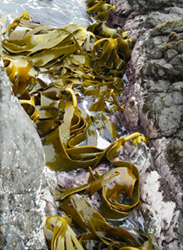
The New Zealand Seaweeds Fisheries Plan includes all seaweed fisheries (except those defined as unwanted organisms under the Biosecurity Act 1993), in all three physical states (attached, free-floating and beach-cast). However, the plan focuses most attention on those seaweed species that are of primary value to commercial, customary, and recreational fishers. Seaweed fisheries in FMA 4 (the Chatham Islands) and FMA 10 (Kermadecs) are not included in this plan – they are covered by the fisheries plans for those areas. The plan encompasses not only marine macro-algae (ie, kelps), but also sea grasses and freshwater algae. Vascular aquatic plants, such as mangroves and watercress (puha), are not included. Seaweeds are found in all inshore inter-tidal to sub-tidal habitats throughout New Zealand. They play very important ecological roles in many aquatic communities - they are the nutritional base for aquatic food webs, and provide habitat and shelter for numerous fishes, invertebrates, birds, and mammals. Seaweed beds support high biodiversity.